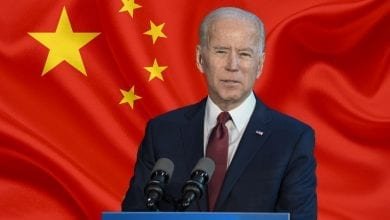Is the World on the Verge of a Debt Crisis?
The entire world is filled with big governments and out of control central banks.
Since the US fell for the Siren Song of big government in the 1910s, many other countries have followed suit.
Now, against the backdrop of the pandemic, debt has exploded due to the profligate spending measures used to keep economies afloat after governments worldwide locked down their countries.
The World Bank reported that 97 million people have fallen into extreme poverty as a result of the government policies implemented to allegedly address the pandemic.
According to a Visual Capitalist post by Rail Amoros, Wuhan virus related government spending has taken global debt levels to their highest level in half a century.
In the ZeroHedge piece, the debt-to-GDP is used as a baseline to see where a country’s financial situation stands. This ratio is the metric used to compare the country’s public debt to its gross domestic product (GDP).
By comparing how indebted a country is and how much it produces in a given year, economists can determine a country’s hypothetical capacity to pay off this debt.
ZeroHedge listed off the top 10 countries in terms of their debt-to-GDP ratios:

Tyler Durden of ZeroHedge turned to the World Economic Outlook Report released in October 2021 to showcase the level of debt countries accumulated.
Japan tops the list of countries with a debt-to-GDP ratio of 257%. As Tyler Durden noted, “In order to finance new debt, the Japanese government issues bonds which get bought up primarily by the Bank of Japan.”
When countries rapidly increase their government debt, markets tend to get jittery. Naturally, a high debt-to-GDP ratio signifies that the country has a higher chance of defaulting on its debt.
High debt-to-GDP ratios are generally associated with periods of economic malaise. Per a World Bank study, countries that had a debt-to-GDP ratio north of 77% for extended periods of time generally went through periods of economic contraction.
The Wuhan virus, specifically the government’s response to it, has exacerbated the debt crisis that first surfaced during the 2008 global downturn. Per an International Monetary Fund report, at least 100 countries must lower spending on education, medical care, and social services. In addition, 30 countries in emerging markets have high levels of debt distress. In other words, these countries are experiencing severe difficulties in servicing their debt payments.
At the end of 2020, global debt reached $226 trillion, which represented the largest one-year increase since World War II.
Furthermore, borrowing by governments represents slightly over half of the $28 trillion increase in debt that took place in this time period, which brought the global public debt ratio to a record level of 99% of GDP.
IMF officials have warned about countries accumulating high levels of debt in a high interest rate environment. They believe high interest rates will weaken the impact of fiscal spending and heighten debt sustainability issues.“The risks will be magnified if global interest rates rise faster than expected and growth falters,” the officials stated.
“A significant tightening of financial conditions would heighten the pressure on the most highly indebted governments, households, and firms. If the public and private sectors are forced to deleverage simultaneously, growth prospects will suffer.”
Overall, the world debt scenario is alarming. For one, it shows that governments worldwide are fiscally negligent. Moreover, rising debt will tempt governments to pursue loose monetary policies as a strategy for reducing their debt burden. This is a losing game because once the printing presses are let loose, inflation can get out of hand and put countries on the road to mass inflationary crisises.
Overall, fiscal profligacy comes with a massive price tag in the long-term. If governments were serious about their citizens’ well-being they would be pursuing sound monetary policies along with a roll-back, or at least devolution of the welfare state to the state level.
This current fiscal situation is unsustainable.
Content syndicated from TheLibertyLoft.com with permission.
Agree/Disagree with the author(s)? Let them know in the comments below and be heard by 10’s of thousands of CDN readers each day!





